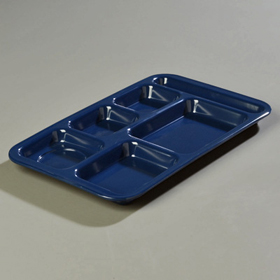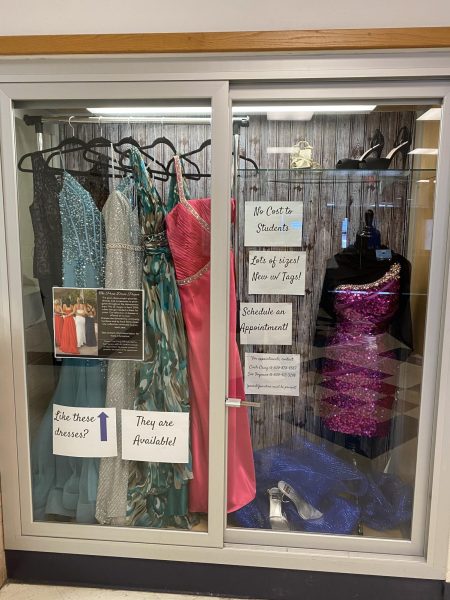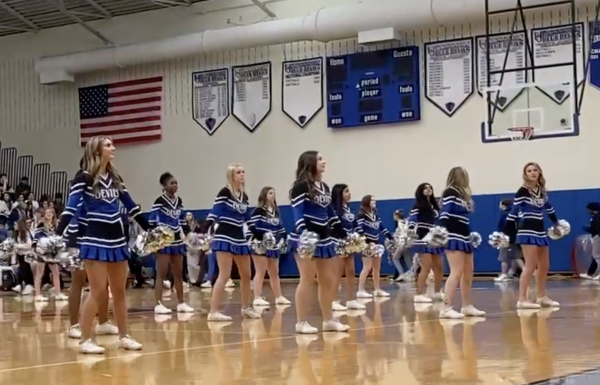New school lunch law affects cafeteria menu

December 13th, 2010. The day school lunches around the country were changed forever.
Why? The Healthy, Hunger-Free Kids Act.
The Healthy, Hunger-Free Kids Act is a law that promotes healthy food to be distributed throughout every school in the country. It’s goal is to make healthy affordable lunch more accessible for students. Passed by President Obama, was part of the First Lady Michelle Obama’s initiative.
The law has been a push and pull argument and debate. A recent trend on social media sites such as Twitter and Instagram are venues for students to expression their dissatisfaction with what cafeterias are serving. Hashtags like #banschoollunch flood media feeds with images of unappetizing “mush” on their lunch trays.
What is perhaps getting lost in the movement, though, is how beneficial this law was intended to be and what challenges it poses to school lunch coordinators.
As the District Superintendent of Food Services and District Assistant Superintendent of Food Services for Hammonton High School, Ms. Heather Triboletti and Ms. Christine O’Donnell deal with these challenges every day.
“One of the toughest challenges for us is reaching our set guideline for a certain amount of sodium, calories, and fat content,” they explained. “For example the beloved pizza dippers had to be taken out because it failed all of the new standards [set forth by the Healthy Hunger-Free Kids Act].”
Triboletti and O’Donnell have little control of what kind of food meets the legal guidelines. They have a strict set of rules that have to be followed so when students complain about the new lunches, they can only reply with “We are doing the best we can.”
“I would address students who don’t like the new lunch menu with the fact that if in the next couple of years the guidelines don’t work and cause issues with money or no positive results, then I believe things will go back to the old days,” Triboletti said. “Right now, lunch sales are slightly lower this year, but with the sale of PB&J, all of the sales are pretty even.”
With so many student opinions circulated online and in conversation, Triboletti and O’Donnell agreed that a student committee would be a positive way for students to offer feedback about the lunchroom offerings.
“Students would most likely learn the process and it would be a good experience for them to be in our shoes,” they explained. “We’re positive that having students voice their opinions for lunches would definitely have a positive output. This job isn’t easy for us either and a student lunch committee would help us out.”
Students vary in their response to the law and the cafeteria menu.
“I bring lunch every day,” said senior Chris Whitener. “I like the idea of eating better quality food and not being restricted to any food. If by some chance the lunches came in a better quality and costed more then I believe I would decide to buy.
According to Whitener, the new law is overreaching.
“I don’t think the government has the right to tell the schools what they can and can’t sell and I don’t think what they have done is going to be beneficial,” he said.
For senior Logan Davis, the price is low, so the quality isn’t as good.
“When I do buy, it will be spicy chicken patty days because that’s something I can’t resist,” he said “I think that if the food costed more for a better quality I would buy much more often. The government shouldn’t interfere with the lunches because I think that should be the school’s choice. As of right now the the new lunches do not seem too beneficial.”
“I would most likely start buying if the lunches sacrificed their low price for a good quality,” explained senior Mackenzie Fitchett. “The fact that the government gets in the way of school lunch menus really bothers me because it should be a parent’s job to decide what a child can and can’t eat. I feel as though normal foods for lunch would benefit more than the food served now.”
Students interested in forming a committee to offer feedback on cafeteria options can do so by contacting a Student Council representative.










